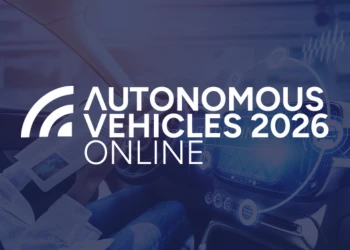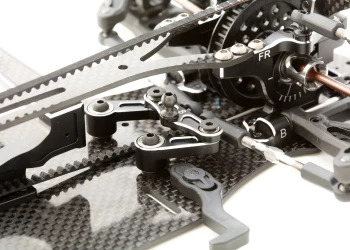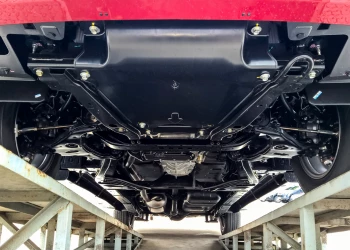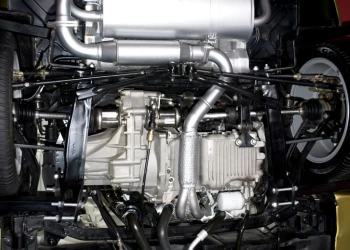Towards highly redundant steering systems
Add bookmarkFor autonomous driving, electric systems require a high level of redundancy to ensure fail-safe performance.
However, such systems must be lightweight and cost-effective. In aviation, it is common practice to install safety-relevant systems twice to ensure fail-safe operation. However, this is a key challenge for the automotive industry due to the constraints of weight and cost.
To realize fully autonomous driving, redundancy in safety-critical systems such as braking and steering is vital. For SAE level 3 vehicles, a human driver is still necessary, but safety-critical functions may be left to the vehicle depending on the traffic and the driving environment.
Redundant functions ensure that all safety-critical functions continue during the time span in which a driver realizes that an intervention is necessary. Moving forward to SAE level 4 and 5 vehicles, that redundancy will become critical as fully autonomous vehicles will eventually remove the driver from the loop.
Steering systems are becoming increasingly complex as part of ADAS, and as we transition to autonomous driving, innovative steering systems must be designed to operate safely when the vehicle encounters unforeseen circumstances. This includes any situation when there is a component or system failure. To this end, several leading automotive suppliers are developing a range of solutions.
Bosch Servolectric
This technology is an electric power steering system for passenger cars that enables highly automated driving, while meeting the highest safety standards.
The Servolectric system is up to 20 percent lighter than comparable compact class conventional power steering systems as it reduces the number of components required. The redundant system architecture enables highly-automated driving with fail-operational security.
The electromechanical power steering system controls and assists the vehicle steering with the aid of an intelligently controlled electric motor. Based on the steering signal from a torque sensor, which measures the torque the driver applies to the steering wheel, the electronic control unit calculates the optimal steering assistance and sends this information to an electric motor, which applies the force required.
Bosch’s Servolectric system meets the requirements of passenger cars and some light commercial vehicles with three variants, with the motor torque transferred in different ways depending on the type of system used.
In the paraxial variant, the torque is transmitted to the servo gear system – a toothed-belt drive and recirculating ball gear – via a toothed disc located on the motor shaft. On the Servolectric steering column variant and the dual-pinion variant, the torque is transmitted to the helical gear by means of a coupling.
With electromechanical steering, the servo assistance cannot only be calculated on the basis of the steering torque applied to the steering wheel, but also by taking into account various additional vehicle parameters.
Bosch’s intelligent steering concept incorporates both the electronic control unit and software that links other vehicle systems and components. By integrating the electronic control unit into the vehicle’s electrical system, Servolectric becomes a key technology for autonomous driving.
The base model of electric power steering provides the foundation for driver assistance functions. The advanced fail-operational steering variant has a redundant system layout and in this way allows highly-automated driving, while also contributing to autonomous driving via networking with the vehicle’s assistance systems.
The fail-operational function enables either a driver or autopilot system to make a safe stop in the rare case of a single failure. It enables an independent return to a minimal risk condition with about 50 percent electric steering support via an electrical fallback solution. This functionality is possible through a fully-redundant electronic architecture where a second actuator can take over if there is a fault with the first actuator.
The system is able to detect any failure in the steering system and move to the fallback system. If the driver is still in the loop, they can safely steer the vehicle without the sudden increase in steering force. For highly-automated driving, the system will be able to recognize a critical situation and automatically steer the vehicle to a safe stop without bringing the driver back into the loop.
Nexteer steering systems
Last year, Nexteer announced a comprehensive suite of technologies towards redundant systems for autonomous driving. Nexteer’s suite consists of a variety of innovative components:
Steering on Demand system
Designed for SAE level 3 and beyond, the steering on demand system enables the safe and intuitive transition of steering control between manual and automated driving. This can be controlled by the press of a button or simply by taking hold of the steering wheel.
Quiet Wheel Steering
This innovative piece of technology is designed for autonomous driving and enables the steering wheel to remain still – even if the vehicle is actually turning. This eliminates possible distractions or hazards for the driver of a fast-rotating steering wheel during autonomous driving.
Stowable Steering Column
In addition to Quiet Wheel, vehicles can also be fitted with a stowable steering column that retracts the wheel when in autonomous mode. This increases space for the driver for comfort or additional activities, while also providing a distinct transition between manual and automated driving modes.
Steer-by-Wire
In Nexteer’s steer-by-wire system, the mechanical connection between wheels and steering wheel is replaced by electronics and actuators on the steering column and rack. The system enables both manual and autonomous driving, while allowing possibilities for advanced safety features and a reduction in weight. The steer-by-wire system emulates the feel of the road and offers a performance range from sports to luxury modes. In addition, the system’s variable steering ratio enhances maneuverability.
High Availability Electric Power Steering
Nexteer’s advanced high availability systems means that the steering safety net is always on. The high availability EPS is designed for resilient operational availability, using top-rated, high-reliability components and has been optimized through additional redundancies in torque and position sensors, electronic control units, winding motors and dual sets of vehicle power and communication connectors. Similar to systems in aviation, the EPS system redundancies offer an important safety back-up function in order to support varying levels of automation.
Cybersecure Advanced Steering
Cybersecurity is another critical issue as steering becomes electronically controlled in autonomous vehicles. Nexteer’s suite of technologies includes additional safety by integrating multi-layer cybersecurity at a steering system level for maximum protection.
The cybersecurity technologies consist of specifically designed hardware modules on the semiconductor level, as well as a multilayered cryptographic software structure, that identifies and authorizes information and command flow between the steering system and other in-vehicle or external controllers.
Summary
Safety-critical functions such as steering present a huge challenge to the automotive industry as it moves towards autonomous driving. Such systems must incorporate fail-operational redundancy.
The normal operation of the steering system in an autonomous environment, in which the vehicle operates on its own without the driver’s control, is a requirement directly related to passenger safety. Even if the system runs into an unexpected problem while driving, the system must be able to detect and mitigate the problem by itself and continue to control the steering wheel normally. This is an essential requirement for autonomous driving to be made possible.
- Interested in the future of car steering? Then you're in luck! Automotive IQ will hold its International Steering Systems Conference on 19-21 November. The event takes place in Potsdam, Germany, and runs alongside the International Braking Conference, too






















